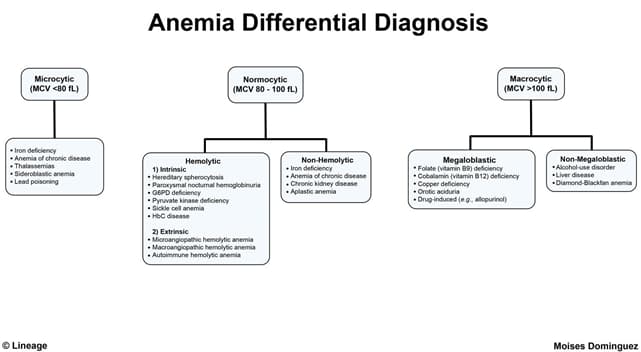Snapshot

- A newborn baby with a history of hyperbilirubinemia at birth requiring phototherapy is noted to be jaundiced on day 12 of life. She is found to have elevated indirect bilirubinemia. Her LDH and haptoglobin are normal, though reticulocyte count is increased. A peripheral blood smear reveals no spherocytes. Phototherapy is started. Concerned about the timing of jaundice and lack of any morphologic abnormalities, the pediatrician orders a functional assay to investigate pyruvate kinase.
Introduction

- Congenital intrinsic hemolytic anemia from RBC enzyme defect
- Genetics
- autosomal recessive
- Pathogenesis
- defective pyruvate kinase
- irreversible step in glycolysis (PEP → pyruvate)
- important in production of ATP
- ↓ ATP
- rigid RBCs → easily lysed RBCs
- defective pyruvate kinase
- Epidemiology
- most common cause of non-spherocytic inherited hemolytic anemia
- rare disorder
Presentation
- Symptoms
- neonatal hemolytic anemia
- severity ranges from life-threatening to mild hemolysis
- pigmented gallstones
- Physical exam
- jaundice in a newborn
- hepatosplenomegaly
Evaluation
- ↑ serum 2,3-BPG
- Extravascular hemolysis
- corrected reticulocytosis is ≥ 3%
- variable to ↓ haptoglobin
- variable to ↑ LDH
- ↑ indirect bilirubin
- Negative Coombs test
- Peripheral blood smear
- no spherocytes
- echinocytes (RBC with thorny projections)
- different from acanthyocytes
- Normal osmotic fragility test
- Diagnostic test
- functional assay of RBC pyruvate kinase activity
Differential Diagnosis
Treatment
- Blood transfusions as needed
- Iron chelation therapy with iron overload
- Splenectomy for severe cases
- Supportive therapy with folate
Prognosis, Prevention, and Complications
- Prognosis
- depends on the severity of hemolysis
- Complications
- if severe may see fetal hydrops
- hyperbilirubinemia requiring phototherapy



